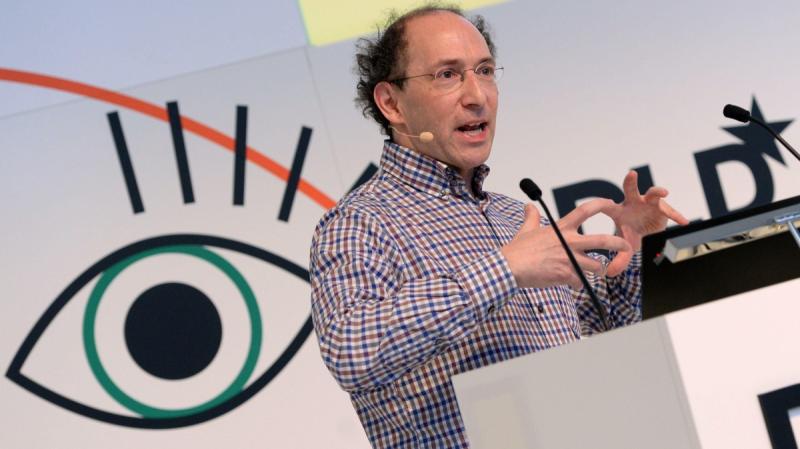challenge of the cities
Sustainable transport: It’s time for urban transport to go digital

The technologies that can optimize urban commuting and boost sustainability with Gordon Feller.
Future Trends Forum’s expert, Gordon Feller, cofounder of Meeting of the Minds, introduces us to the technologies that are already in place to digitize urban transport and make it more sustainable.
Gordon Feller has worked for more than four decades at the intersection of environmental change, global security, and technology innovation. His aim has always been to accelerate the emergence of tools and systems that strengthen our communities and enhance their sustainability.
From 2010 to 2017, he served as Director of Urban Innovation at Cisco Systems HQ. He founded Meeting of the Minds in the 1990s, stitching together a global leadership network which is enabling urban transformation. Gordon was appointed by the Obama Administration to serve on the US Federal Comm. established by The US Congress.
Gordon was part of the group of experts that analyzed, within the Foundation’s think tank Future Trends Forum, the technology that makes it possible for any imaginable object to be able to be connected to the Network, become intelligent and therefore, offers infinite possibilities: The Internet of Things (IoT).
We took advantage of our #FIBKVoices space to present the ideas and insights of this expert on urban sustainability and, in particular, on sustainable transport.
Current situation of urban transportation
Ever since the rise of Uber and Lyft in the 2000s, micro-mobility and shared mobility both have helped to improve how we get around. Beyond adding an element of convenience, scooters, ride-sharing and other alternatives to driving also improve sustainability. Indeed, transport represents almost a quarter of Europe’s greenhouse gas emissions and is the main cause of air pollution in cities. Helping to take cars off the road is seen by investors, policymakers and employers as a compelling strategy for reducing that footprint. Unfortunately, mass transit, especially public bus services, is in urgent need of a major digital redesign, with most public sector models simply out of date or underfunded.
Many people live in the suburbs and work in the city center and vice versa, many people live in the city center and work in industrial parks in the suburbs. Dormitory cities, satellite cities, and the centers of large cities themselves have transportation networks and transportation systems that are not yet on the path to sustainability.
Can new technology take cars off the road?
It almost goes without saying the dominance of the car is detrimental to our collective sustainability goals. The current cost of urban congestion in Europe is still 180 billion euro a year, according to the web magazine Infra Journal. Meanwhile, from 2014 to 2020, just under two thirds of all reported exceedances of air quality standards in Europe were linked to dense traffic in urban centers and proximity to major roads, mainly due to emissions of nitrogen oxides (NOx), as reported by the European Environment Agency.
Transforming the future of urban transportation is a now core priority for many employers. These organizations aren’t limited to companies like Amazon, and other retailers, whose business models depend on the ability to fulfil customer service orders from large warehouses often sited far from the neighborhoods where their employees live. It’s often the case in agriculture, that field and processing plant workers face long commutes, which are hampered by poor public transportation and limited access to vehicles.
Experimenting with digital transportation
Various alternatives are springing up, although most shared mobility solutions, from on-demand ride-hailing to e-scooters, require a constant level of high demand. Thus, they’ve predominantly taken hold within urban areas. Peak demand, such as during commute periods, meanwhile, leads to supply scarcity and surge pricing – far from ideal conditions. Ride-hailing is an individual mode too; it’s inherently costly and doesn’t address key issues, especially traffic congestion and environmental sustainability. Micro-mobility solutions, including e-bikes and scooters, are effective over short distances, only, and they’re sensitive to weather conditions.
Nevertheless, with access to employment feeding into our quality of life and social mobility, providing more effective and green transportation is crucial for promoting the health and wellbeing of urban communities. Employers, for what it’s worth, do seem to be taking note of these facts. When Aston Martin sought to implement a commute solution for its UK-based employees, according to BusinessLeader, congestion and sustainability played a key role in the decision.
While some firms offer subsidized bus and carpool programs, others, like Microsoft, have chosen to blend convenience with sustainability targets. The tech giant has, for example, developed an internal mobile platform that allows people to optimize their daily travel, with integrations into other Microsoft products, like Outlook. There’s a growing list of key players focused on mobility, including some of the world’s most innovative companies, like Alphabet. Google’s parent company has spent tens of billions of dollars each year, for the past six years, on developing better options for Google Maps, Waze, Waymo, Sidewalk Labs, and even at Google X – the company’s “moonshot factory”.
Reinventing the bus
The market is yet open to vendors meeting niche needs, although the smart bus platform Zeelo, for instance, is making inroads. The firm aims to drastically decrease carbon emissions by encouraging a “modal shift” towards shared mobility combined with mass transit vehicles. A single 46-seater standard bus, for example, takes 30 cars off the road.
Many companies working on urban transport have made net-zero central to their goals. Zeelo is a bit different, insofar as the company is actively switching all its operating bus fleets to electric vehicles (EVs), with hopes to get there by 2030. This is what it takes to deliver net-zero journeys in the UK, and adds up to taking almost 12 million cars off the road per year. Zeelo’s co-founder and CEO, Sam Ryan, makes it clear that getting to his goal “must be a collective initiative between corporates, technologists, scientists, engineers, policymakers and governments”. He adds “dependencies – such as sufficient power charging stations in remote, peri-urban and rural areas – are paramount if we wish to switch to EV bus fleets and make this a viable mass transportation solution”.
The firm devises routes through its artificial intelligence (AI) algorithm, shaping these based on where employees live. Bus routes are designed for drop-offs either at or near the location of the workplace, avoiding the need for multiple transfers too. Zeelo appears to be well-suited to support first and last-mile solutions, such as carpooling, micro-mobility, and public transit. It can also propose tailored alternatives where too many transfers would render a commute inconvenient.
Active in London, Citymapper’s Project Grasshopper, meanwhile, claims to have reinvented the entire software stack for running and operating a bus, based on the notion that conventional buses haven’t evolved enough. “They still roam around cities utilizing old systems of operations and inefficient technology,” the company says. “If we’re going to solve urgent problems of congestion and infrastructure, we need buses to improve, to operate smarter. In the era of smartphones, we can have responsive buses that react to real-time needs.”
Finally, there are innovations to optimize parking spaces, such as Cleverciti, which solves the parking search by guiding drivers to the most convenient available space, reducing search time and therefore vehicle emissions.
To dig into the underlying forces that drive these sweeping changes, one of the mobility world’s leading experts, Saskia Hausler, coauthored a special report some years ago. In it, Hausler and her McKinsey colleagues argued that “as shared mobility continues to gain momentum, automakers and their suppliers need to understand what’s driving its popularity”. As these shifts continue to shape the way policymakers and city planners design what the commute looks like in 2022, it’s clear we’re only partway through the journey.








